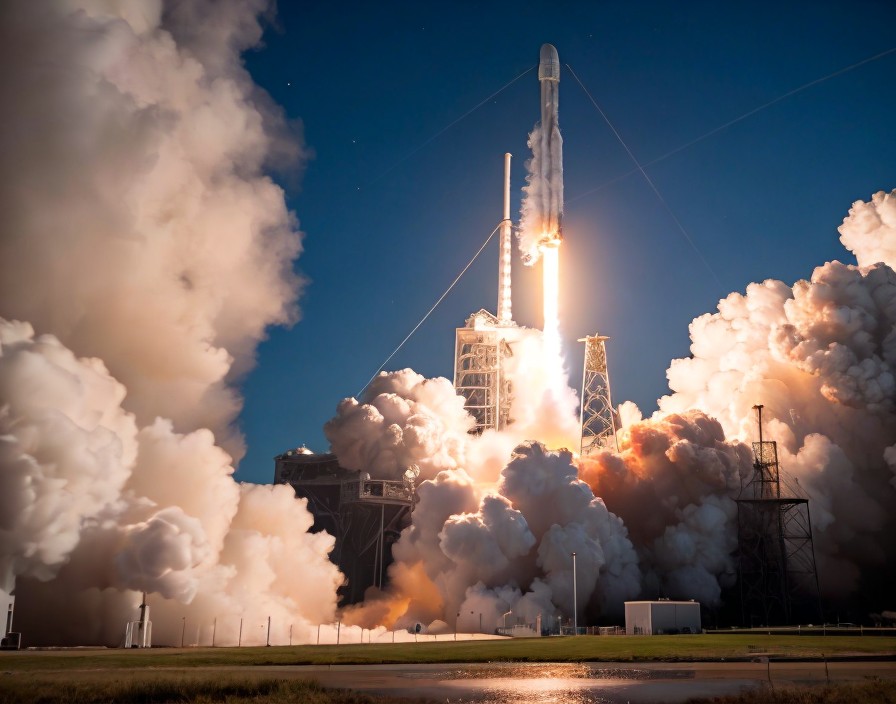SpaceX, a name synonymous with audacity and innovation, has reshaped the landscape of space exploration in the 21st century. Founded in 2002 by Elon Musk with the ambitious goal of colonising Mars, the company has disrupted the industry with its focus on reusable rockets, cost-effective launches, and cutting-edge spacecraft technology. This article delves into the company’s journey, analyses its impact on the space industry, and explores its future aspirations.
From humble beginnings to industry disruptor
SpaceX’s early years were marked by numerous challenges, including failed launches and financial constraints. However, the company persevered, driven by Musk’s unwavering vision and a culture of constant iteration and improvement. Its first major success came in 2008 with the Falcon 9 rocket, the first privately developed liquid-fuel launch vehicle to reach orbit. This was followed by the Dragon spacecraft in 2010, marking a significant step towards achieving human spaceflight capabilities.
A crucial turning point arrived in 2012 when SpaceX successfully landed the first stage of a Falcon 9 rocket after launch. This feat, considered groundbreaking at the time, paved the way for the development of reusable launch vehicles, significantly reducing launch costs and revolutionising the industry. As Gwynne Shotwell, SpaceX’s COO, aptly stated, “Reusable rockets are the key to unlocking the space economy.”
Redefining spaceflight with innovation
SpaceX’s commitment to innovation extends beyond reusable rockets. The company has developed powerful engines like the Merlin and Raptor, pushing the boundaries of rocket propulsion technology. It has also pioneered the use of 3D printing in spacecraft manufacturing, leading to faster production times and lighter structures. These advancements have translated into significant cost reductions, making spaceflight more accessible for governments, private companies, and even individuals.
Beyond launch services: a multifaceted enterprise
SpaceX’s ambitions extend beyond launch services. The company is building Starlink, a mega-constellation of internet satellites aimed at providing global broadband access. This ambitious project has the potential to bridge the digital divide and connect underserved communities worldwide. Additionally, SpaceX is developing Starship, a next-generation launch vehicle and spacecraft designed for interplanetary travel. With Starship, the company aims to enable human missions to Mars and beyond, pushing the boundaries of human exploration.
Impact and future outlook
SpaceX’s impact on the space industry is undeniable. It has driven down launch costs, fostered competition, and spurred innovation across the board. The company’s success has inspired a new generation of entrepreneurs and engineers to pursue careers in space exploration. As Lori Garver, former NASA Deputy Administrator, states, “SpaceX has changed the space industry in a way that no other company has.”
Looking ahead, SpaceX faces exciting challenges and opportunities. The success of Starlink and Starship will be crucial for its future growth and financial sustainability. Additionally, the company must navigate the increasingly competitive space environment, including the emergence of new players and geopolitical tensions.
Conclusion
SpaceX’s journey from a small startup to a global leader in space exploration is a testament to its ambition, innovation, and relentless pursuit of its goals. The company’s impact on the industry is undeniable, and its future holds the potential for even more transformative achievements. As humanity sets its sights on the stars, SpaceX is poised to play a pivotal role in shaping the next chapter of space exploration.
Photo credit: René Cortin – Flickr – Wikimedia Commons


